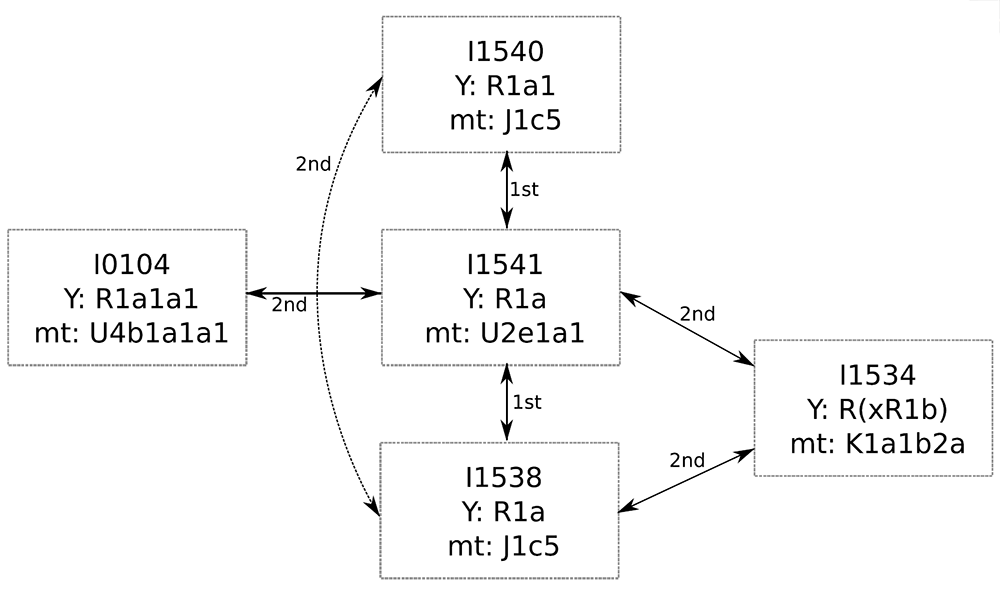Open access Estimating genetic kin relationships in prehistoric populations, by Monroy Kuhn, Jakobsson, & Günther, PLOS One (2018).
Abstract
Archaeogenomic research has proven to be a valuable tool to trace migrations of historic and prehistoric individuals and groups, whereas relationships within a group or burial site have not been investigated to a large extent. Knowing the genetic kinship of historic and prehistoric individuals would give important insights into social structures of ancient and historic cultures. Most archaeogenetic research concerning kinship has been restricted to uniparental markers, while studies using genome-wide information were mainly focused on comparisons between populations. Applications which infer the degree of relationship based on modern-day DNA information typically require diploid genotype data. Low concentration of endogenous DNA, fragmentation and other post-mortem damage to ancient DNA (aDNA) makes the application of such tools unfeasible for most archaeological samples. To infer family relationships for degraded samples, we developed the software READ (Relationship Estimation from Ancient DNA). We show that our heuristic approach can successfully infer up to second degree relationships with as little as 0.1x shotgun coverage per genome for pairs of individuals. We uncover previously unknown relationships among prehistoric individuals by applying READ to published aDNA data from several human remains excavated from different cultural contexts. In particular, we find a group of five closely related males from the same Corded Ware culture site in modern-day Germany, suggesting patrilocality, which highlights the possibility to uncover social structures of ancient populations by applying READ to genome-wide aDNA data. READ is publicly available from https://bitbucket.org/tguenther/read.

I already wrote about its bioRxiv preprint, and how this late Corded Ware family from Esperstedt – which obviously led some researchers to certain wrong conclusions since its publication some 5 years ago – shows an evident shift (in admixture and PCA cluster) to the steppe, probably unrelated to the initial Corded Ware expansion.
This difference with other earlier Corded Ware migrants may also explain their shared R1a-M417, possibly xZ645 lineages, different from the R1a-Z645 subclades that expanded with Corded Ware migrants.
Related:
- Uralic as a Corded Ware substrate of Indo-Iranian, and loanwords in Finno-Ugric
- North Pontic steppe Eneolithic cultures, and an alternative Indo-Slavonic model
- Olalde et al. and Mathieson et al. (Nature 2018): R1b-L23 dominates Bell Beaker and Yamna, R1a-M417 resurges in East-Central Europe during the Bronze Age
- Corded Ware pastoral herding economy and belief system through mortuary practices
- Corded Ware culture contacts in the Baltic Sea region linked to immigrant potters
- The concept of “Outlier” in Human Ancestry (III): Late Neolithic samples from the Baltic region and origins of the Corded Ware culture
- Genetic prehistory of the Baltic Sea region and Y-DNA: Corded Ware and R1a-Z645, Bronze Age and N1c
- Another hint at the role of Corded Ware peoples in spreading Uralic languages into north-eastern Europe, found in mtDNA analysis of the Finnish population
- New Ukraine Eneolithic sample from late Sredni Stog, near homeland of the Corded Ware culture